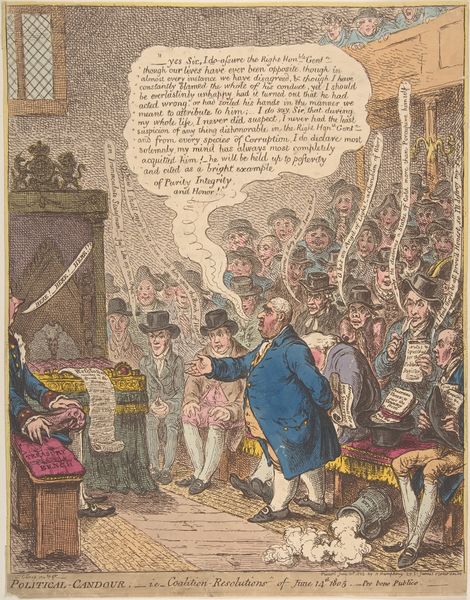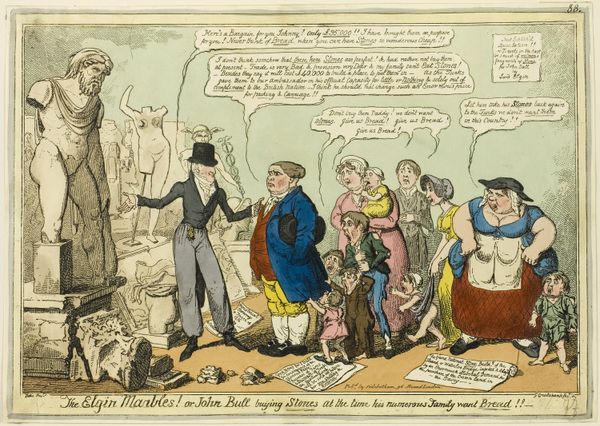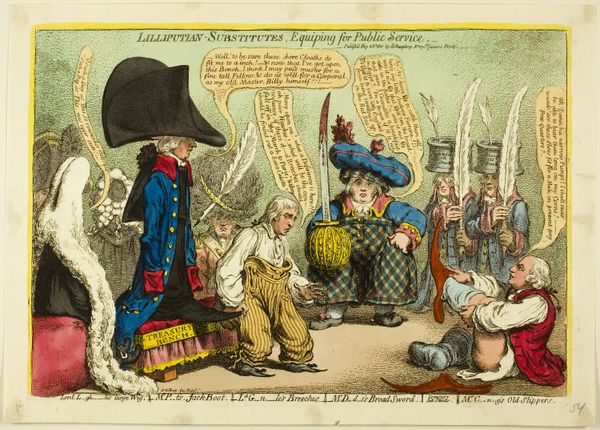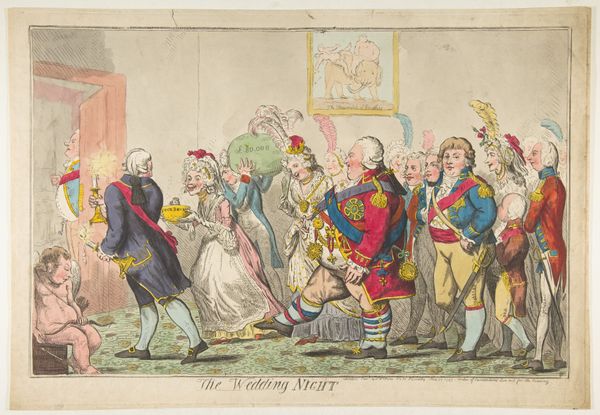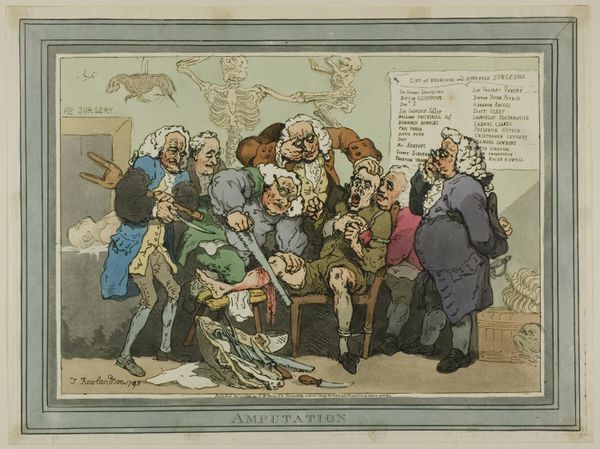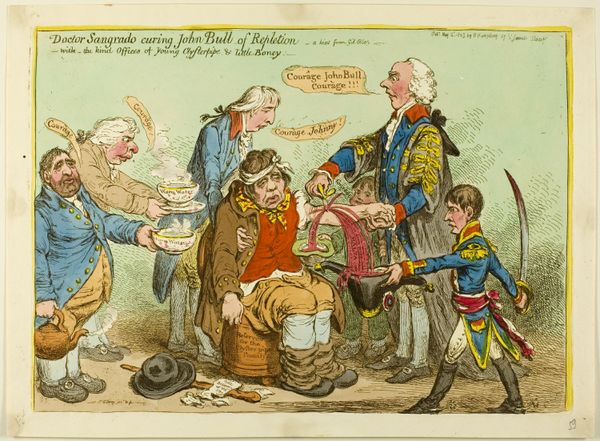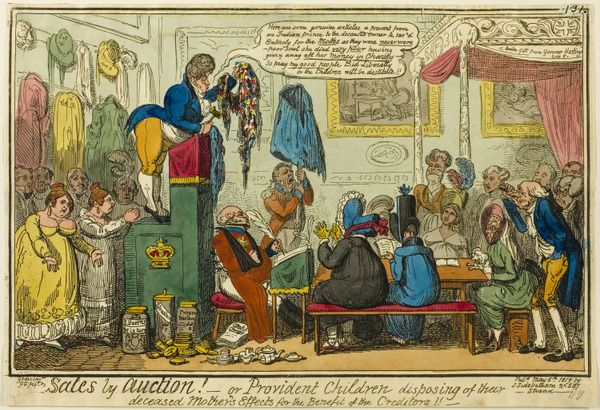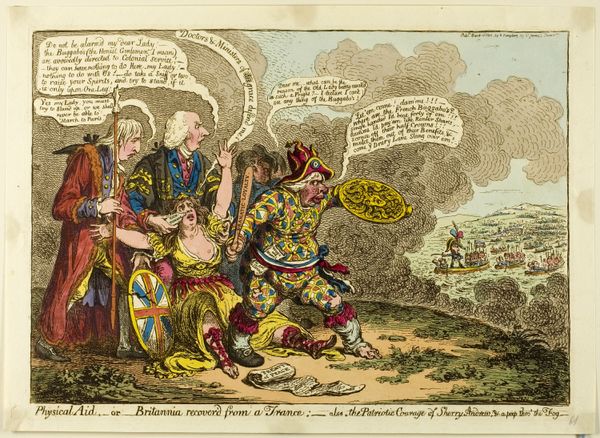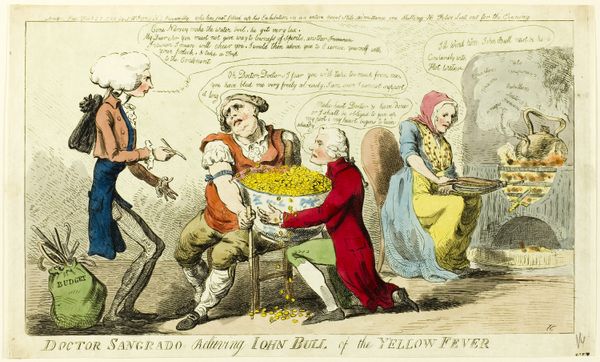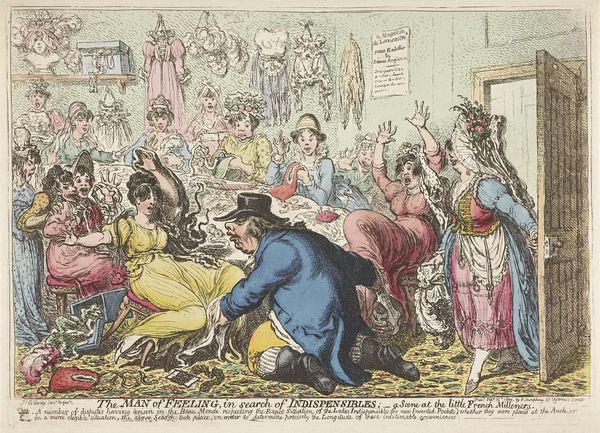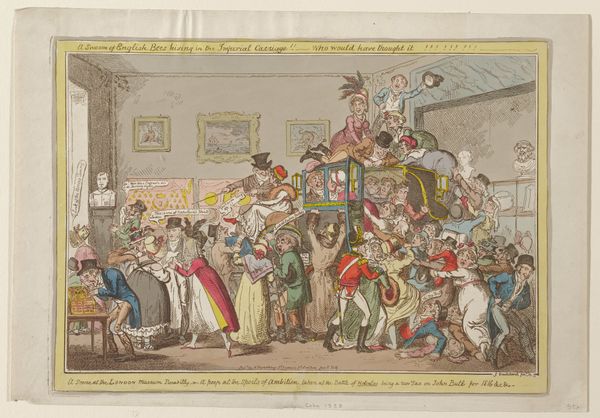
Old English-Gentleman Pester'd by Servants Wanting Places Possibly 1809
0:00
0:00
drawing, print, etching, paper
#
drawing
#
16_19th-century
# print
#
etching
#
caricature
#
paper
#
romanticism
#
genre-painting
Dimensions: 250 × 355 mm (image); 260 × 360 mm (plate); 282 × 390 mm (sheet)
Copyright: Public Domain
Curator: Welcome. Let’s spend some time looking at “An Old English-Gentleman Pester'd by Servants Wanting Places,” a print attributed to James Gillray, possibly from 1809. It’s part of the Art Institute of Chicago’s collection. Editor: Immediately, I notice how crowded the composition feels. All these figures pressing in—it creates a real sense of anxiety and being overwhelmed. The linework, too, is so incredibly precise, yet also agitated. Curator: Yes, Gillray's known for his biting caricatures, using distortion to reveal character. Consider how each figure clamoring for position possesses very particular attributes and props related to office. The prints and texts convey an incredibly vivid socio-political commentary through symbols that we should analyze closely. Editor: Indeed! There are so many visual cues within the visual language: gestures, clothing, implements—these create semiotic webs that transmit deeper meanings to contemporary audiences, revealing status, ambition, and even desperation. Also, notice how skillfully he has used his medium, how precise are the etching lines when describing each detail in a quite unsettling atmosphere. Curator: The central figure, presumably the "Old English Gentleman," embodies the power under siege. He is almost a symbol himself, representative of a traditional order being aggressively challenged by ambition and social mobility. A visual and emotional push-and-pull between legacy and disruption takes place that can teach us something. Editor: Exactly. He's framed as both object of desire—all want his favor—and object of pity, about to be overthrown. It speaks to a broader cultural shift towards questioning of hierarchy. A theme very often explored at the time in popular printed art that had the public and politicians as a common target. Curator: Thinking about the broader reach of prints like this is useful. These were not rarefied objects, but rather part of everyday visual culture that circulated widely. These satirical statements are a collective reminder of times gone by and, indeed, are still useful today in an entirely new social landscape. Editor: Reflecting on it, it is stunning how, from line and form, the artist created this visual feast that carries an undercurrent of cultural and emotional weight and speaks eloquently of society's ongoing concerns.
Comments
No comments
Be the first to comment and join the conversation on the ultimate creative platform.
